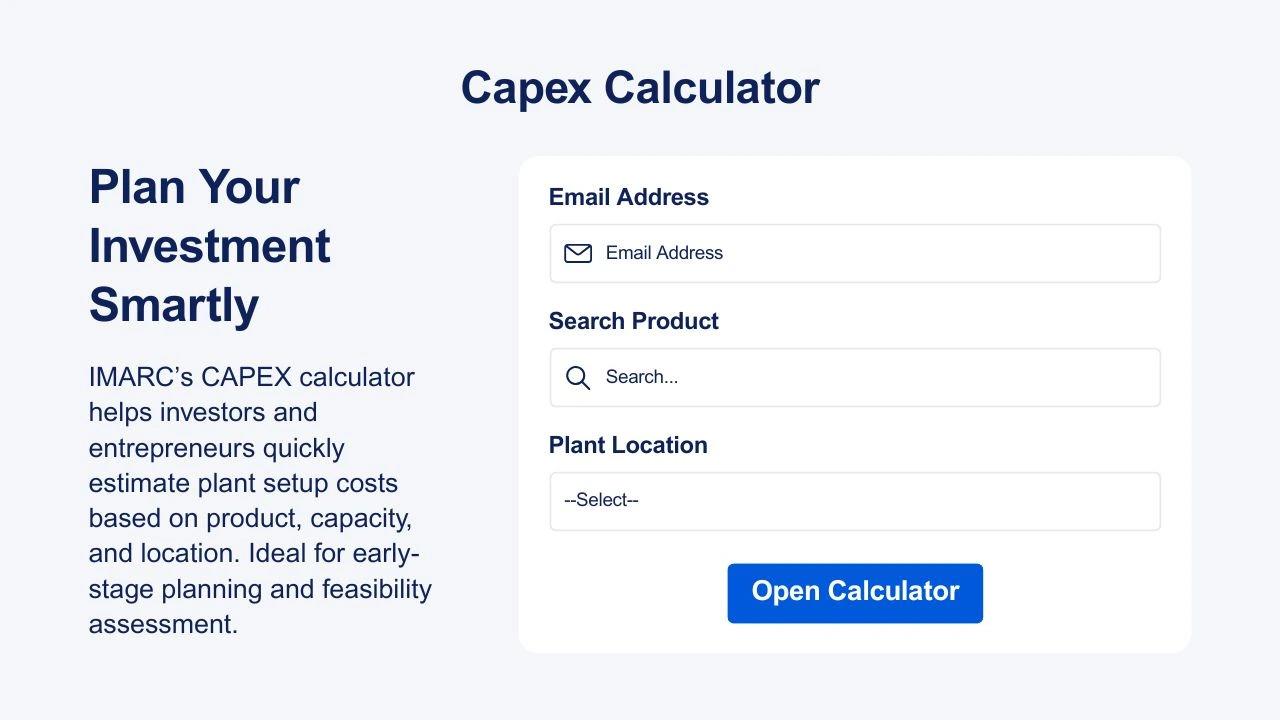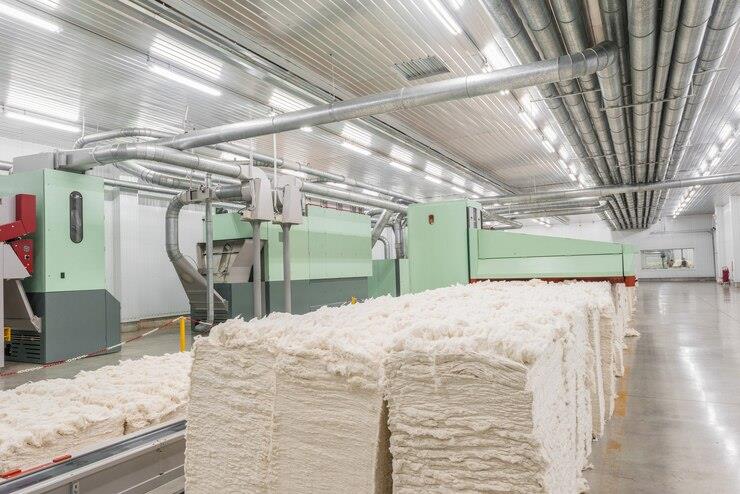
Surgical Cotton Wool Manufacturing Plant Setup Cost And Requirements
Setting up a surgical cotton wool manufacturing plant requires raw cotton procurement, cleaning, bleaching, carding, rolling, and sterilization equipment. The facility should meet GMP and hygiene regulations, with dedicated areas for processing and packaging. Small- to medium-scale plants can operate with semi-automatic machinery, enabling cost-effective production while maintaining quality compliance.
Request for Sample Report: https://www.imarcgroup.com/surgical-cotton-wool-manufacturing-plant-project-report/requestsample
IMARC Group's “Surgical Cotton Wool Manufacturing Plant Project Report 2025: Industry Trends, Plant Setup, Machinery, Raw Materials, Investment Opportunities, Cost and Revenue” offers a detailed and practical guide for entrepreneurs and businesses looking to enter the manufacturing industry. The report includes in-depth analysis of capital investment requirements, project financing options, working capital needs, and projected returns.
This comprehensive business plan outlines every critical step involved in setting up a successful manufacturing plant unit from understanding the industry landscape to planning for real-world challenges. It provides valuable insights into essential components such as surgical cotton wool manufacturing plant cost, machinery cost, operating cost, raw material requirements, utility needs, infrastructure setup, and packaging logistics.
Surgical Cotton Wool Industry Outlook 2025:
The surgical cotton wool industry in 2025 is projected to witness steady growth, driven by rising healthcare expenditure, expanding hospital networks, and increasing demand for hygiene products. Growing awareness of infection control and the prevalence of chronic wounds are further boosting consumption in both developed and emerging markets. Technological advancements in cotton processing and packaging are enhancing product quality and shelf life. Additionally, supportive government policies and investments in healthcare infrastructure are fostering market expansion, while sustainable sourcing of raw cotton is becoming a key focus area for manufacturers.
Key Insights for Surgical Cotton Wool Manufacturing Plant Setup:
Detailed Process Flow:
-
Product Overview
Unit Operations Involved
Mass Balance and Raw Material Requirements
Quality Assurance Criteria
Technical Tests
Project Details, Requirements and Costs Involved:
-
Land, Location and Site Development
Plant Layout
Machinery Requirements and Costs
Raw Material Requirements and Costs
Packaging Requirements and Costs
Transportation Requirements and Costs
Utility Requirements and Costs
Human Resource Requirements and Costs
Capital Expenditure (CapEx) and Operational Expenditure (OpEx) Analysis:

Project Economics:
-
Capital Investments
Operating Costs
Expenditure Projections
Revenue Projections
Taxation and Depreciation
Profit Projections
Financial Analysis
Profitability Analysis:
-
Total Income
Total Expenditure
Gross Profit
Gross Margin
Net Profit
Net Margin
Key Cost Components of Setting Up a Surgical Cotton Wool Plant:
-
Land and Building – Purchase or lease of suitable premises, including construction or renovation costs.
Machinery and Equipment – Investment in cleaning, bleaching, carding, rolling, cutting, sterilizing, and packaging machines.
Raw Material Procurement – High-quality raw cotton and necessary chemicals for bleaching and sterilization.
Utilities and Infrastructure – Water, electricity, waste treatment, and ventilation systems.
Labor and Training – Skilled and semi-skilled workforce recruitment and operational training costs.
Quality Control and Compliance – Laboratory setup, certification, and adherence to GMP and regulatory standards.
Packaging and Branding – Materials for safe, sterile packaging and marketing materials.
Working Capital – Initial funds for operational expenses, maintenance, and supply chain management.
Economic Trends Influencing Surgical Cotton Wool Plant Setup Costs 2025:
-
Raw Cotton Price Volatility – Fluctuations in global cotton prices due to climate impact, supply chain disruptions, and market demand.
Energy and Utility Costs – Rising electricity and water tariffs affecting operational expenses.
Labor Cost Inflation – Increasing wages in both developed and emerging economies driven by skill demand and labor regulations.
Regulatory Compliance Expenses – Stricter quality, safety, and environmental standards requiring higher investment in certification and monitoring.
Technological Advancements – Adoption of automated machinery increasing upfront costs but improving efficiency long term.
Global Trade Dynamics – Changes in import/export duties and currency exchange rates impacting raw material sourcing and equipment procurement.
Challenges and Considerations for Investors in Surgical Cotton Wool Plant Projects:
-
Regulatory Approvals – Compliance with stringent healthcare, hygiene, and environmental regulations can be time-consuming and costly.
Raw Material Quality Assurance – Dependence on consistent supply of high-grade cotton to meet medical-grade standards.
Market Competition – Presence of established players offering competitive pricing and strong distribution networks.
Technology Selection – Choosing between manual, semi-automatic, or fully automated systems impacting both cost and scalability.
Operational Efficiency – Ensuring cost control through effective labor management, waste reduction, and process optimization.
Supply Chain Stability – Mitigating risks from transportation delays, import restrictions, or global supply disruptions.
Working Capital Management – Maintaining liquidity to handle initial production cycles and payment terms with buyers.
Request for Customization: https://www.imarcgroup.com/request?type=report&id=9177&flag=E
Conclusion:
The surgical cotton wool manufacturing sector presents significant investment potential in 2025, supported by growing healthcare demand and heightened focus on hygiene standards. However, success in this industry requires careful planning, robust quality control, and adherence to stringent regulatory requirements. Strategic investments in modern technology, sustainable raw material sourcing, and efficient supply chain management can enhance competitiveness and profitability. While initial setup costs may be influenced by economic and market fluctuations, long-term prospects remain favorable for investors who prioritize operational efficiency and product excellence.
About Us:
IMARC Group is a global management consulting firm that helps the world's most ambitious changemakers to create a lasting impact. The company excel in understanding its client's business priorities and delivering tailored solutions that drive meaningful outcomes. We provide a comprehensive suite of market entry and expansion services. Our offerings include thorough market assessment, feasibility studies, company incorporation assistance, factory setup support, regulatory approvals and licensing navigation, branding, marketing and sales strategies, competitive landscape, and benchmarking analyses, pricing and cost research, and procurement research.
Contact Us:
IMARC Group
134 N 4th St. Brooklyn, NY 11249, USA
Email: sales[@]imarcgroup.com
Tel No:(D) +91 120 433 0800
United States: (+1-201971-6302)
Legal Disclaimer:
MENAFN provides the
information “as is” without warranty of any kind. We do not accept
any responsibility or liability for the accuracy, content, images,
videos, licenses, completeness, legality, or reliability of the information
contained in this article. If you have any complaints or copyright
issues related to this article, kindly contact the provider above.


















Comments
No comment